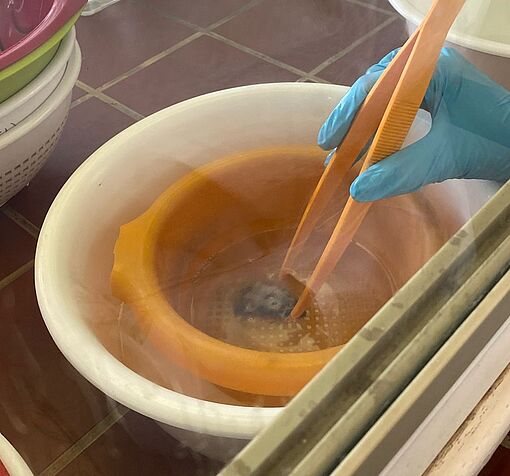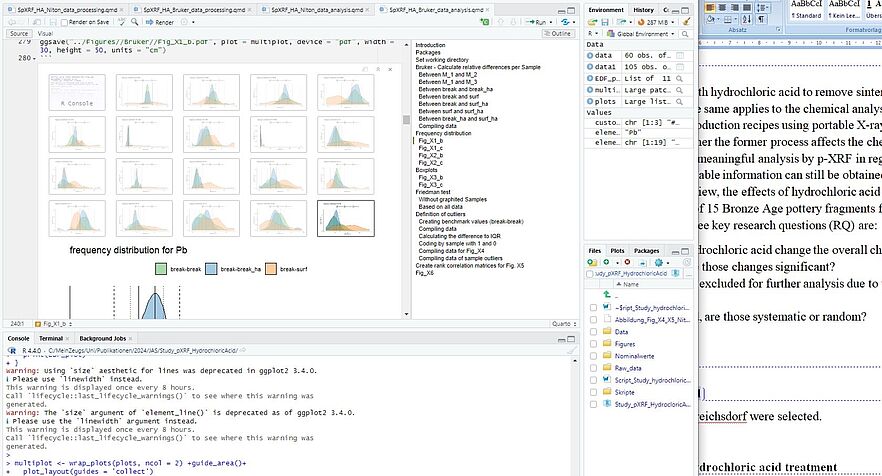The Hydrochloric Acid Experiment
Michaela Schauer & Tabea Truntschnig - Started in February 2024
Hydrochloric acid is commonly used for cleaning archaeological artifacts, but concerns have been raised about its potential impact on the chemical composition of pottery sherds. This triggered questions about whether subsequent provenance analysis using p-XRF still remains feasible. To address this issue, an experiment was carried out to assess the effects of hydrochloric acid treatment on archaeological pottery samples and the implications for p-XRF studies.
Fifteen selected pottery samples were subjected to a standardised treatment process:
- Three measurements were taken at three different spots on the surface and fresh break of each sample using two p-RFA devices (Niton/TestAllGeo mode and Bruker/Mudrock Dual mode). The measurement duration was 5 minutes per point with an 8mm measurement spot.
- The pottery samples were soaked in water for 10 minutes, then briefly exposed to 5% hydrochloric acid for 15 seconds, followed by rinsing for 1 hour. Subsequently, they were air-dried at room temperature for 3 days.
- The samples were then reanalyzed using the same method as in the initial step.
Preliminary Results
The initial results from the experiments are promising, suggesting that despite the hydrochloric acid treatment, meaningful analytical insights can still be obtained.
A publication is in preparation, and the results will be presented at upcoming conservation and archaeological conferences. The first joint presentation of Michaela Schauer, Tabea Truntschnig and Gergana Almstädter will be part of the 27th Österreichische Restaurator*innen Tagung für Bodenfunde, held from the 24th to the 26th of September 2024 at the kärnten.museum (Museumgasse 2) in Klagenfurt am Wörthersee.




